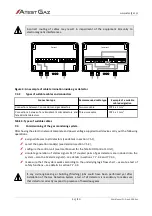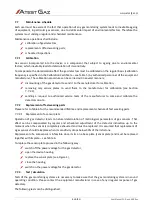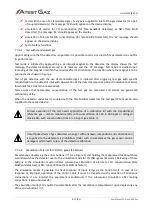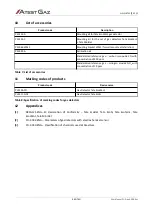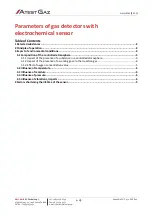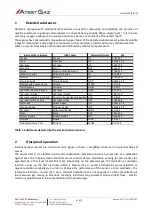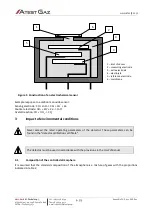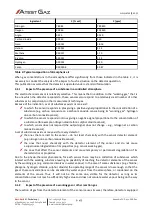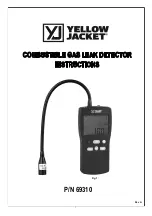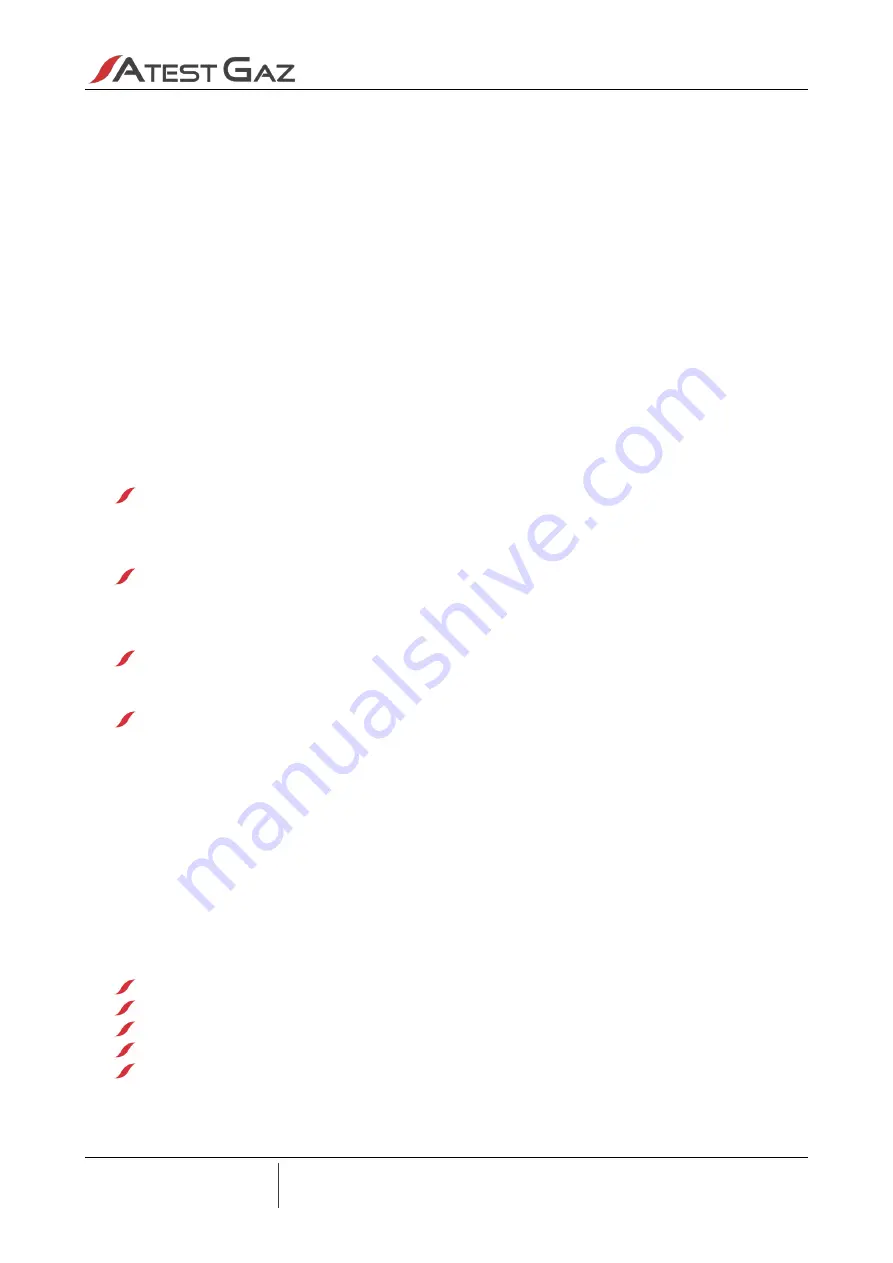
www.atestgaz.pl
with electrochemical sensors are designed to measure and detect the short-term presence of certain gases
in the atmosphere. Both the more sustained concentration with values falling within the range of
measurement, and even instantaneous concentrations outside the measuring range lead to a rapid wear of
the sensor.
3.1.3
Effect of oxygen concentration value
Depending on the sensor, oxygen is required in most cases for the electrochemical reaction. For a short
period of time, oxygen dissolved in the electrolyte is sufficient, however, constant operation in an oxygen-
free atmospheres is generally impossible.
3.2
Influence of temperature
The temperature of the measured atmosphere affects the characteristics of the sensor. Its influence in the
work of the sensor is compensated electronically.
Very rapid changes in air temperature in the rated temperature range of the detector can cause the sensor
responses to this phenomenon.
Rapid reduction of temperature can cause a rapid increase in relative humidity, and thus the reaction of the
sensor.
3.3
Influence of moisture
Depending on the sensor, water is necessary for the electrochemical reaction because the sensors
cannot operate in an atmosphere with a low relative humidity. Working in such conditions may lead
to the excessive concentration of the electrolyte, which is corrosive and can cause damage to the
sensor.
When the humidity of the measured atmosphere is within the rated range of the detector
operation, it does not affect the reading. However, sudden, abrupt changes of humidity in the
measured atmosphere can cause momentary appearance of the signal despite the lack of working
gas in the vicinity of the sensor.
It is necessary to consider phenomena making the working gas react with moisture in the
atmosphere, not allowing it to reach the sensor (vapours of ammonia, chlorine, hydrogen chloride,
phosgene, etc.).
Condensation may block the flow of working gas to the sensor.
3.4
Influence of pressure
Sudden change of pressure in the presence of working gas can cause an incorrect indication of the detector
proportional to the speed and volume change of pressure.
3.5
Influence of vibrations, impacts
It should be ensured that the detector is not exposed to shock and vibration in excess of the amplitude of
vibrations amounting to 0.15 mm of the frequencies of over 10 Hz.
4
Factors shortening the lifetime of the sensor
The lifetime of the sensor is limited due to the gradual wear of the electrolyte and electrodes.
This time can be significantly reduced as a result of:
long-term persistence of concentrations with the values falling within the range of measurement,
the temporary presence of concentrations substantially exceeding the measurement range,
impact of extreme humidity (very dry or very humid air),
too high ambient temperature,
occurrence of abrupt pressure changes.
Atest-Gaz
A. M. Pachole sp. j.
ul. Spokojna 3, 44-109 Gliwice, Poland
VAT No.: PL 9691433231
tel.: +48 32 238 87 94
fax: +48 32 234 92 71
e-mail: contact@atestgaz.pl
p. 5/5
Appendix: PU-Z-032-ENG R02
•


